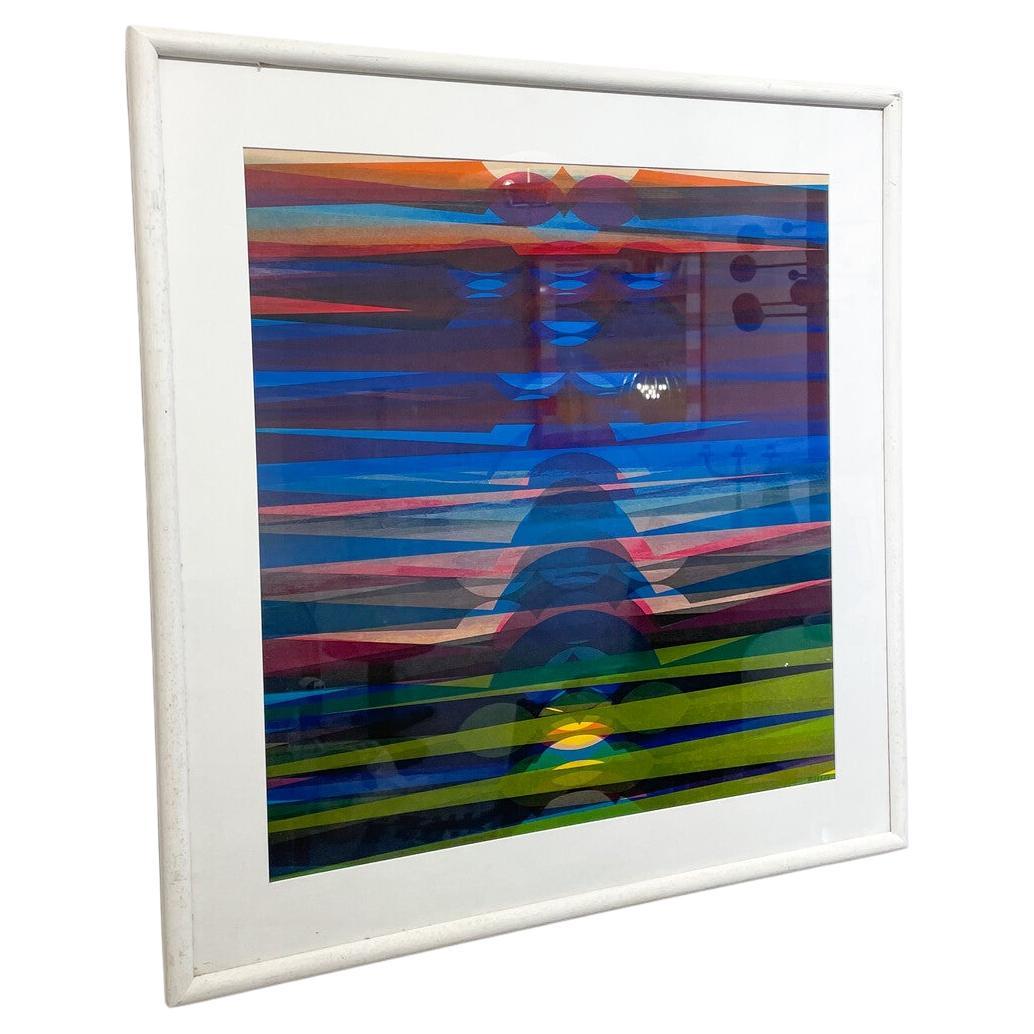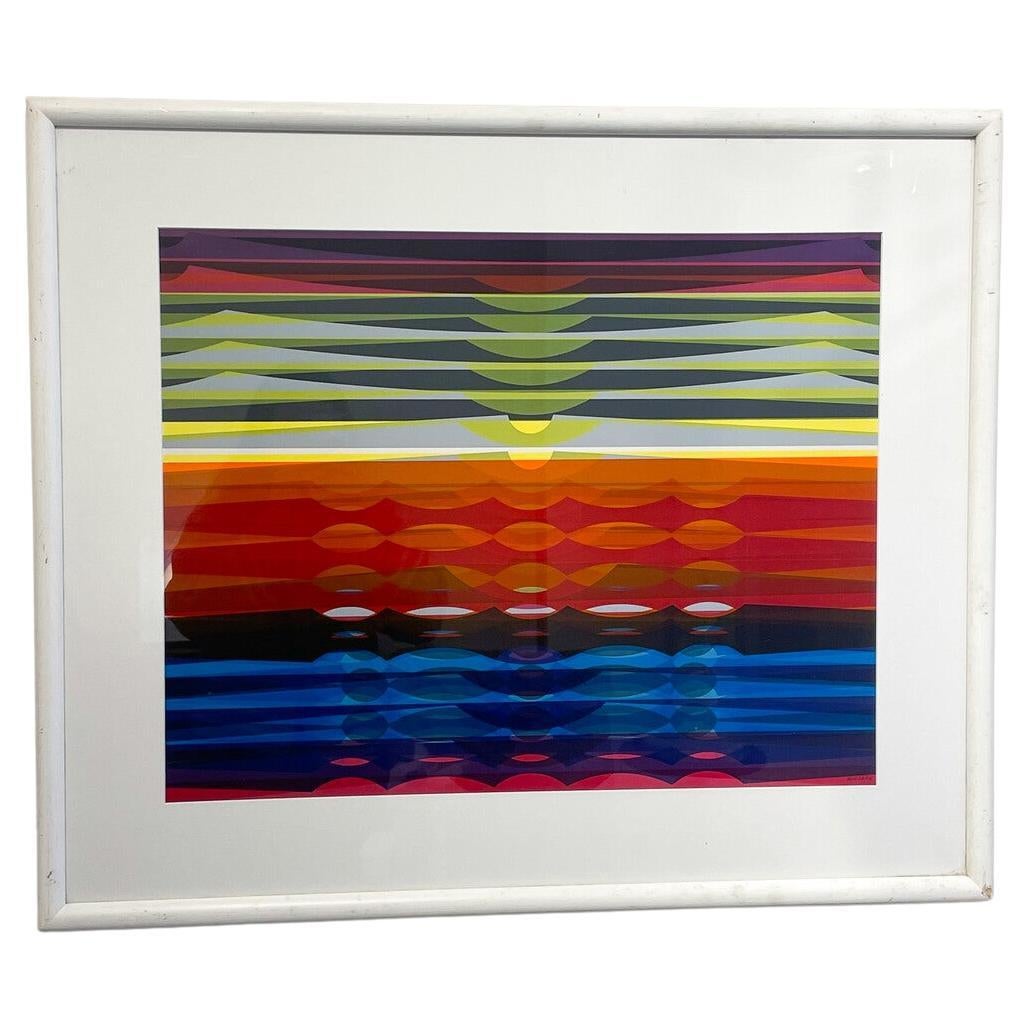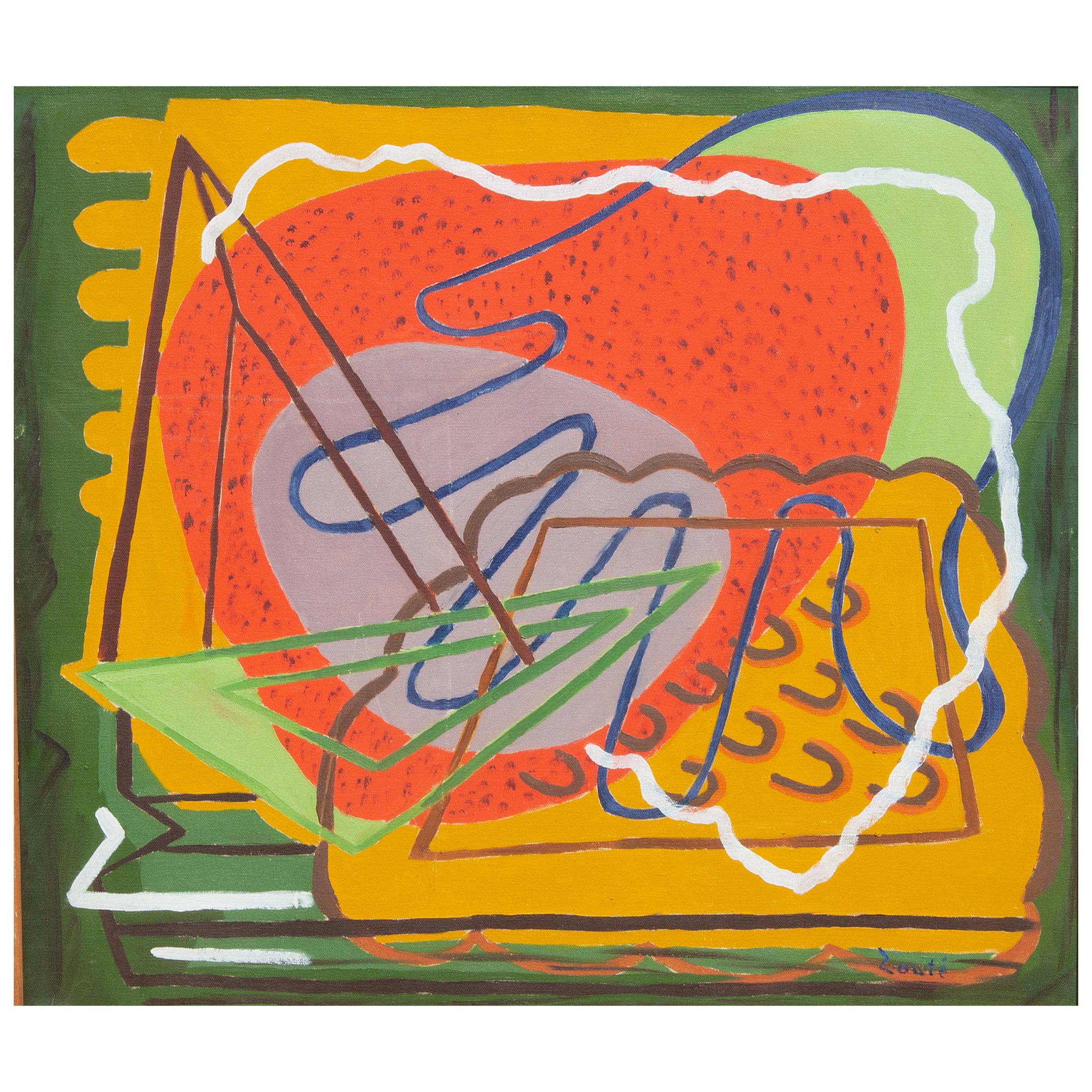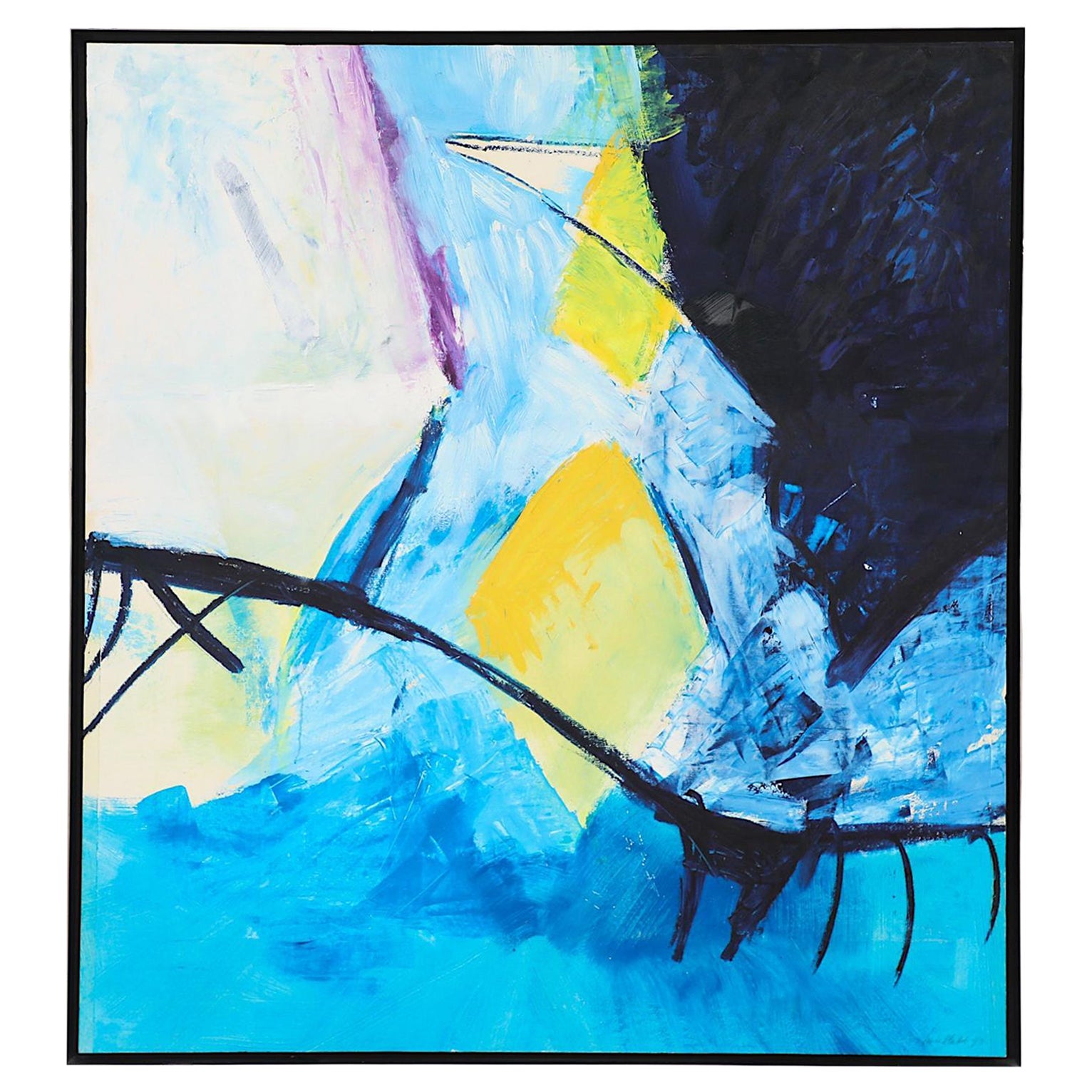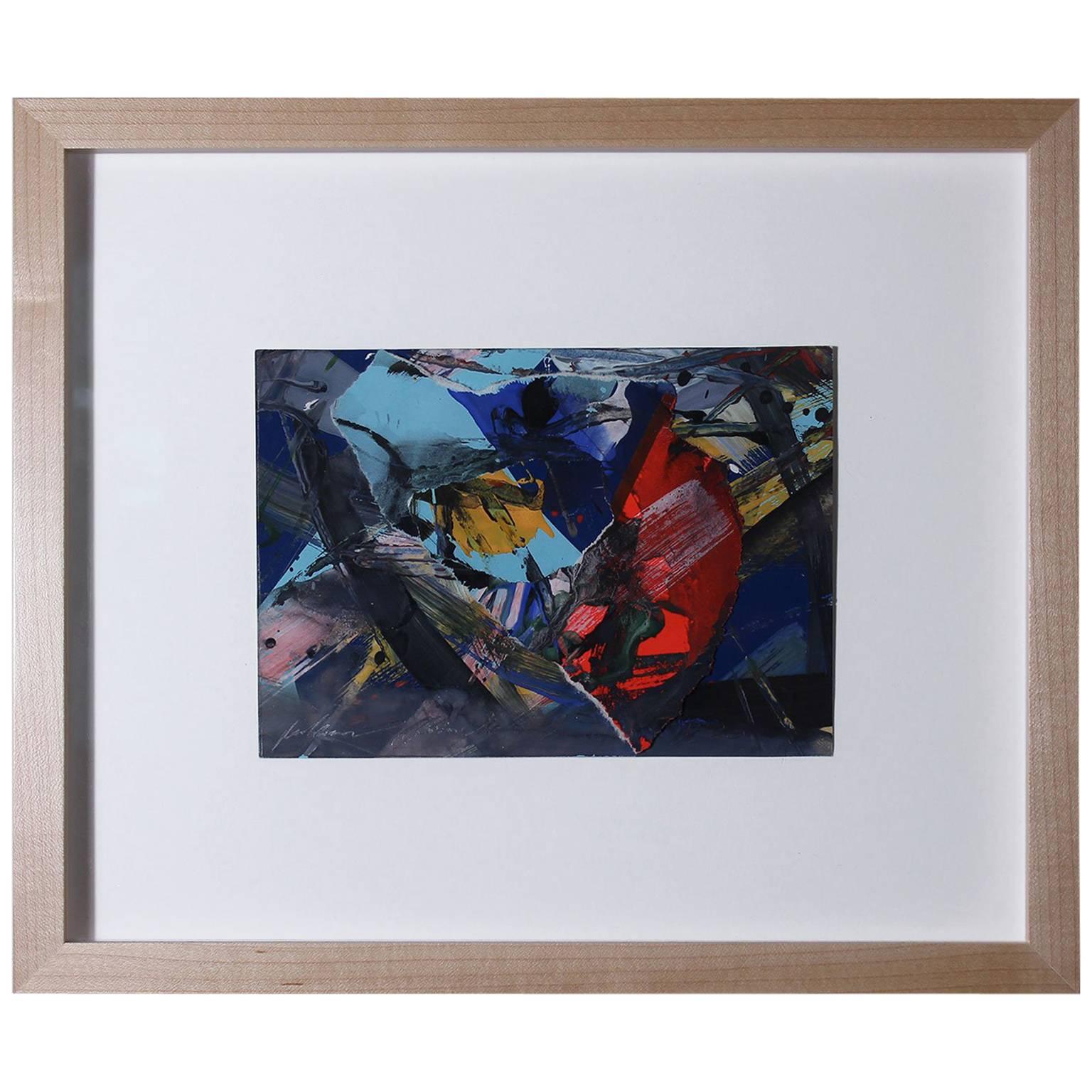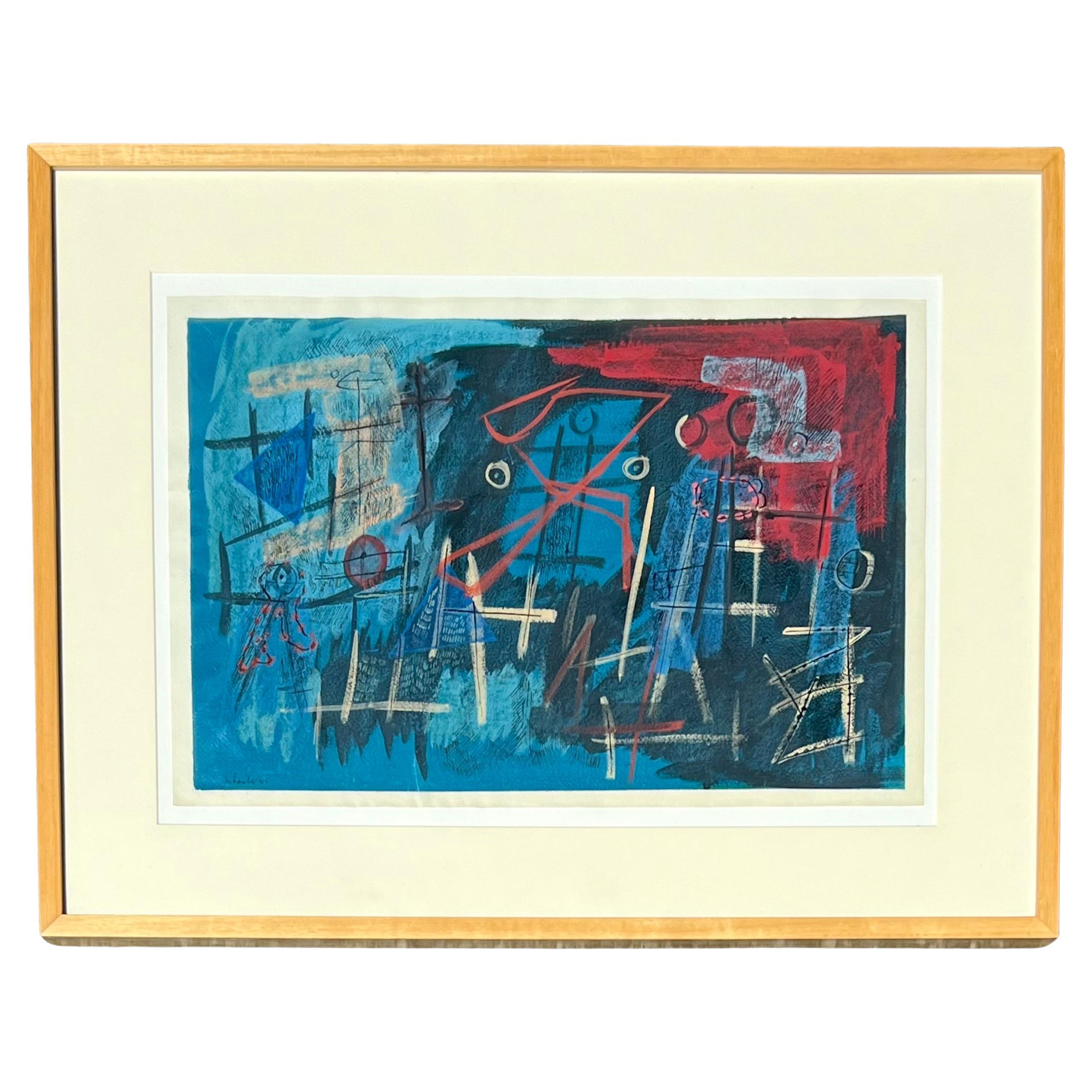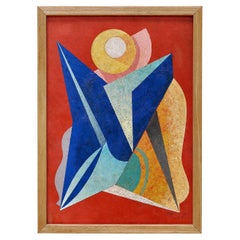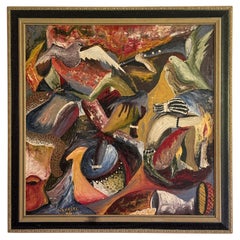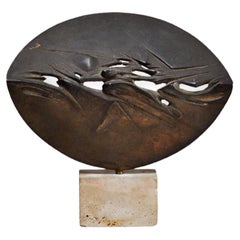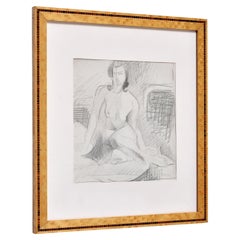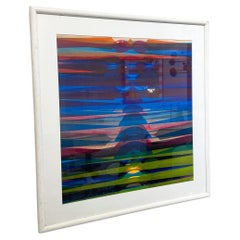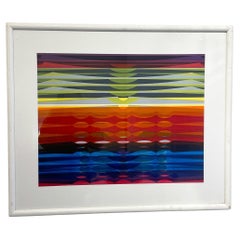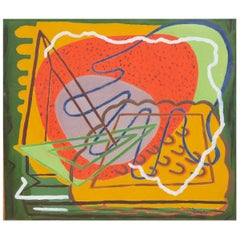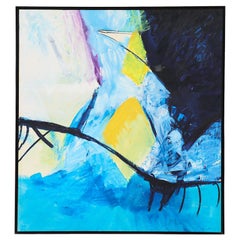Items Similar to Abstract Guache Composition by Jozef Mees, Belgian Constructivism 1976
Want more images or videos?
Request additional images or videos from the seller
1 of 11
Abstract Guache Composition by Jozef Mees, Belgian Constructivism 1976
$2,348.16
£1,737.35
€1,950
CA$3,246.75
A$3,564.53
CHF 1,859.62
MX$43,135.78
NOK 23,307.49
SEK 21,961.78
DKK 14,847.35
About the Item
A colorful abstract gouache on paper by Belgian artist Jozef Mees, dated 1976. Framed behind glass with a golden frame.
Jozef Mees (1998-1987) is a Belgian visual artist who was active as a painter, architect, and interior designer. A student of Jean Delvin, Mees graduated from the Academy of Ghent in 1920. He then went to work in his family’s furniture business. Although he started his career as a cabinetmaker and decorator, he continued to nurture his creative aspirations and his artistic work was exhibited for the first time in 1924. However, it would be until after World War Two that Mees would explicitly focus on his painting developments.
Dimensions without frame: 67 x 46/With frame: 85 x 70 cm.
- Dimensions:Height: 33.47 in (85 cm)Width: 27.56 in (70 cm)Depth: 1.97 in (5 cm)
- Style:Mid-Century Modern (Of the Period)
- Materials and Techniques:
- Place of Origin:
- Period:
- Date of Manufacture:1976
- Condition:Wear consistent with age and use.
- Seller Location:Antwerp, BE
- Reference Number:1stDibs: LU6567232371292
About the Seller
5.0
Gold Seller
Premium sellers maintaining a 4.3+ rating and 24-hour response times
Established in 2019
1stDibs seller since 2022
51 sales on 1stDibs
Typical response time: 6 hours
- ShippingRetrieving quote...Shipping from: Antwerp, Belgium
- Return Policy
Authenticity Guarantee
In the unlikely event there’s an issue with an item’s authenticity, contact us within 1 year for a full refund. DetailsMoney-Back Guarantee
If your item is not as described, is damaged in transit, or does not arrive, contact us within 7 days for a full refund. Details24-Hour Cancellation
You have a 24-hour grace period in which to reconsider your purchase, with no questions asked.Vetted Professional Sellers
Our world-class sellers must adhere to strict standards for service and quality, maintaining the integrity of our listings.Price-Match Guarantee
If you find that a seller listed the same item for a lower price elsewhere, we’ll match it.Trusted Global Delivery
Our best-in-class carrier network provides specialized shipping options worldwide, including custom delivery.More From This Seller
View AllAbstract Geometric Painting, Unknown Artist, 1950s
Located in Antwerp, Antwerp
Original geometric abstract painting from the 1950s, composed of layered angular forms in blue, ochre, and pale pink, set against a bold red background. The work has a strong sense o...
Category
Vintage 1950s French Mid-Century Modern Paintings
Materials
Wood
Large Spanish Abstract Oil On Canvas Painting, 20th-century
Located in Antwerp, Antwerp
A stunning large framed abstract painting, likely Spanish or Portuguese in origin, from the late 20th century. The piece features a vibrant and decorative composition, showcasing a d...
Category
Late 20th Century Spanish Mid-Century Modern Paintings
Materials
Paint
Abstract Bronze Sculpture by Franco Ciuti, Italy 1970's
By Franco Buzzi
Located in Antwerp, Antwerp
A bronze sculpture on a natural stone base made by Italian artist Franco Ciuti in the 1970’s. Conveys the spirit of brutalist and modernist works of the period. A very decorative pie...
Category
Vintage 1970s Italian Brutalist Abstract Sculptures
Materials
Stone, Bronze
André Lhote (1885 - 1962) Abstract Pencil Drawing, 1920's
By André Lhote
Located in Antwerp, Antwerp
DETAILS
Pencil drawing by french artist André Lhote (1885 - 1962). A seated nude woman drawn in Lhote’s atelier, circa 1920. This work is framed behind glass and is signed on the low...
Category
Vintage 1920s French Art Deco Drawings
Materials
Paper
Bronze Modernist Abstract Sculpture by Grégory Anatchkov, France, 1980
Located in Antwerp, Antwerp
Abstract bronze sculpture on a black marble base by french artist Grégory Anatchkov (1941 - 1997). This sculpture shows a very appealing organic composition and is different in prese...
Category
Late 20th Century French Mid-Century Modern Abstract Sculptures
Materials
Belgian Black Marble, Bronze
Oil on Canvas 'Clown' Painting by Noted Artist Jeanne Lorioz, France, 1980s
By Jeanne Lorioz
Located in Antwerp, Antwerp
A highly decorative and charming original oil on canvas painting by the noted female French artist Jeanne Lorioz (1954). This piece dates to the 80's but no exact year is mentioned o...
Category
Late 20th Century French Paintings
Materials
Canvas, Wood
You May Also Like
Abstract Composition Gouache on Paper, Miodrag, Signed
By Dordevic Miodrag
Located in Brussels, BE
Abstract Composition Gouache on Paper, Miodrag, Signed
Category
Vintage 1970s Mid-Century Modern Paintings
Materials
Glass, Wood, Paint
Abstract Composition Gouache on Paper, Miodrag, Signed
By Dordevic Miodrag
Located in Brussels, BE
Abstract Composition Gouache on Paper, Miodrag, Signed
Category
Vintage 1970s European Mid-Century Modern Paintings
Materials
Glass, Wood, Paint
Abstract Composition by Zoute (Leon Salter) Mid Century
Located in Rochester, NY
Abstract Modernist oil painting by Zoute. Oil on canvas mounted on board. Painted in circa 1940's.
Zoute (Born-Leon Salter, 1903-1976) was self-taught and well exhibited during his...
Category
Mid-20th Century American Mid-Century Modern Paintings
Materials
Paint
Large Abstract Acrylic Painting on Wood Board by Imke Plattel, 1993
Located in Los Angeles, CA
Large abstract acrylic painting on wood board by Imke Plattel, 1993. An abstract in blue with the sensation of water and wind. Plattel was born in Zwolle, The Netherlands in 1960 and...
Category
1990s Dutch Mid-Century Modern Paintings
Materials
Acrylic
1980 Richard Allen Morris Abstract Painting Collage
By Richard Allen Morris
Located in San Diego, CA
A strong little abstract oil collage from 1980 by Richard Allen Morris. Overall frame measures 13" wide, 11" tall, 1" deep. Image size is 7" wide,...
Category
20th Century American Mid-Century Modern Paintings
"Abstract Composition" by Louis Schanker
Located in Wiscasset, ME
Tempura on heavy paper, signed and dated 1945 lower left. The piece measures 23" x 30" including the frame and presents very well overall.
Provenance:
Willard Gallery, NYC
Bradbu...
Category
Vintage 1940s American Mid-Century Modern Contemporary Art
Materials
Paint
